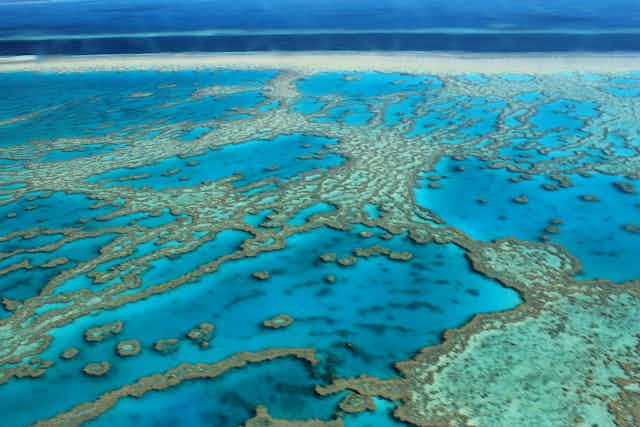Last week, the Australian and Queensland governments released a reef report card which found the overall condition of the reef in 2010-2011 was “poor”. This was compared to its “moderate” condition in 2009.
Poor water quality, caused by run-off from farms and grazing properties, has long had detrimental effects on the Great Barrier Reef’s health. Given that voluntary water quality initiatives have failed, it’s time to seriously consider tougher measures.
Why is water quality so poor?
The lack of action at farm and grazing property level is the reason for the abject failure to reach targets for reducing the loads of nitrogen, sediments and pesticides entering the Reef. Jon Brodie et al say it is unclear whether a desirable outcome would be achieved even if targets were met. This suggests that selecting actions that deliver assured progress should be a priority.
The 2009 Reef Plan targets for adoption of improved practices, designed to drive the reduction in pollution by 2013, were for 50% of the grazing industry and 80% of the sugar cane and horticulture industries. In practice only 17% of graziers, 34% of sugar cane growers and 25% of horticultural producers complied by 2011.

Recent extreme climate events are a contributing factor to the downgrade. Cyclone Yasi was very destructive from Cooktown to Mackay. Flood plumes from the Fitzroy, Burnett and Mary rivers affected inshore reefs. Recovery from these onslaughts will take decades.
But the Reef’s poor state is not just due to recent phenomena. Coral cover loss has been occurring for years. Research in PNAS shows half has been lost in the last 27 years, and the scientific consensus is that a third of inshore reefs has been lost in the last six years. So the downgrade has not come as a surprise to scientists.
New targets too soft
Twenty years ago, the Australian and Queensland governments adopted a water quality target for the Reef: by 2020 they wanted “to reduce human-caused inputs into the World Heritage Area of silt, nutrients, toxic pesticides, herbicides and other toxic pollutants to as close to zero as possible”.
While acknowledging that this stringent target would have been hard to achieve and perhaps unnecessary, it is a far cry from the soft targets now adopted.
The new targets only aim for a 50% reduction in nitrogen, 20% reduction in sediments and a 60% reduction in pesticides by 2018. These reductions are in line with the poor rates achieved during 2009-2011. Yet it is known that pollutants are 2 to 8.9 times that prevailing before settlement by Europeans.
The need for relief is urgent. This ecosystem is facing threats from a more extreme climate, and accumulating water quality problems caused by dredging due to expansion of coal ports.
A plan to make polluters pay
The present Reef Plan has some built-in incentives for farmers and graziers to voluntarily adopt best practice. But the majority obviously do not see a financial gain in changing their management style. Consequently, the policies and practices they adopt aren’t doing what’s needed to improve water quality at catchment level.
More interventionist measures now appear to be justified, including levying penalties on farmers when pollution loads exceed agreed targets and employing direct regulation. A scenario follows.
At a suitable upstream point, water quality is measured. Farmers in the sub-catchment above are issued with a permit allowing them to pollute up to a target. The sum of targets of all sub-catchments equals the water quality target for the whole of the Reef. Targets are progressively lowered over time.
Sub-catchments may trade their permits. Those with a capacity to meet their target relatively cheaply will sell their permits to another where meeting the targets is more costly. This lowers the overall cost of meeting the target. Trading does not alter the total number of permits and the overall target.
Sub-catchment groups that exceed their targets, allowing for sale and purchases of permits, are penalised. Penalties can be combined with incentives; sub-catchment groups that beat their targets get a finacial reward.
It is apparent that far too much clearing has taken place along river and creek banks throughout the cropping areas facing the Reef. Moreover the types of fertiliser and herbicides and pesticides used are liable to cause pollution. Atrazine and diuron herbicide residues persist in the lagoon at low concentrations even during non-flooding seasons.
The regulation of setback from waterways and use of certain chemicals and types of fertiliser would complement the adoption of penalties.
Penalties and regulation will be unpalatable to landholders and politicians in certain electorates. Nevertheless, such measures must be seriously considered given the uptake of better practice by only a minority of landholders and the urgency in bringing relief to the Reef.

